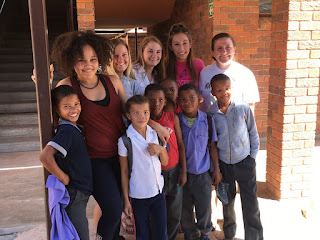We arrived at the Kgalagadi Transfrontier Park in time for an afternoon game drive. This was a fascinating and very different experience from Krueger not only because of the desert versus savannah but along with the ecosystem there were many differences in size, biodiversity and types of animals.
KTP is twice the size of Krueger and spans both South Africa and Botswana. In fact most of the park is in Botswana and when you are driving through you can tell which country you are in by which side the marker is on - left or right of your vehicle. There are no borders between the two countries within the park so you drive in and out of both which is pretty neat. Admission to the park is tightly controlled and restricted. The fees was much higher as well and only 20 vehicles per day are allowed inside. This means it had to be booked months in advance. It also means that it is much less crowded and the experience is more authentic and less touristy than Krueger.
Since our drive was in the afternoon most of the animals especially the big cats were likely to be resting and indeed we did not see any. There are no elephants or rhinos here and giraffes were introduced a few years ago although they are not indigenous to this park. We did however see many spectacular oryx or gemsbock, a striking striped antelope with magnificent straight antlers and springbok, a smaller antelope. We also saw barn owls, several large birds including ostriches and a bustard, secretary birds, cranes and others. Other animals we observed included black-backed foxes, wildebeest and ground squirrels. Because the landscape is desert like with short scrubby grass and few bushes or trees the amimals here are clearly visible and easier to spot than in Krueger.
Tomorrow we have an early morning extended game drive where we hope to spot some of the big cats. Fingers crossed!!















































